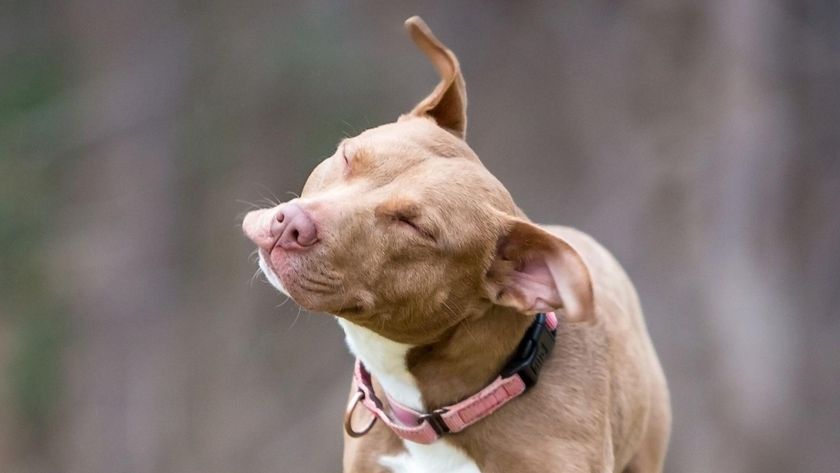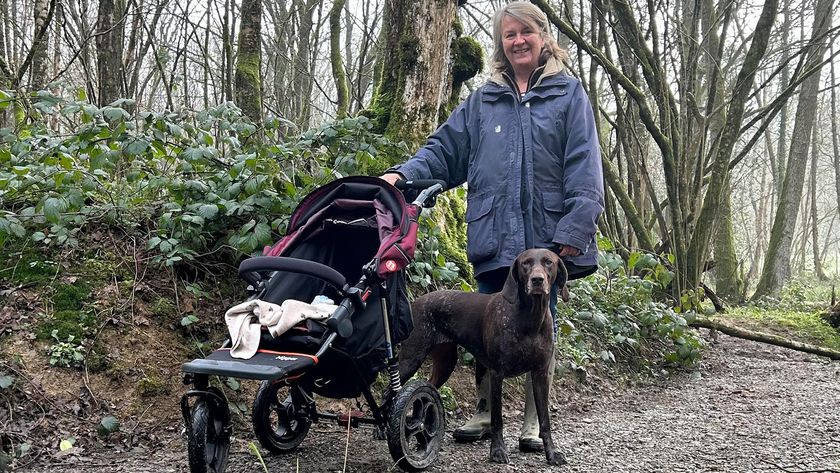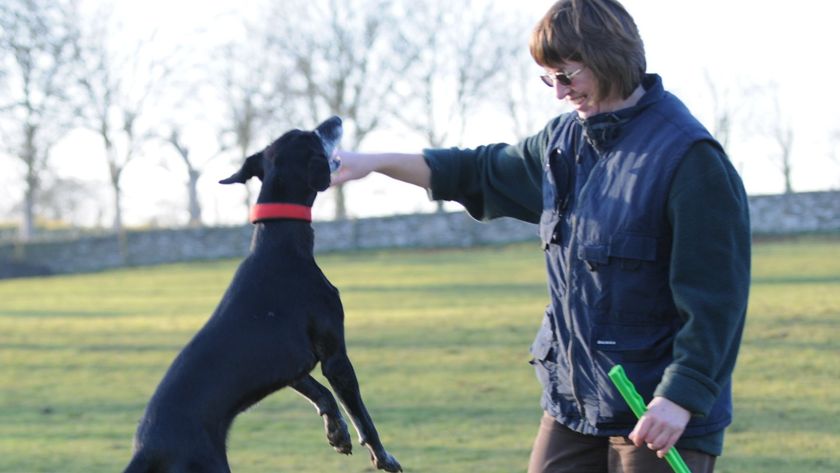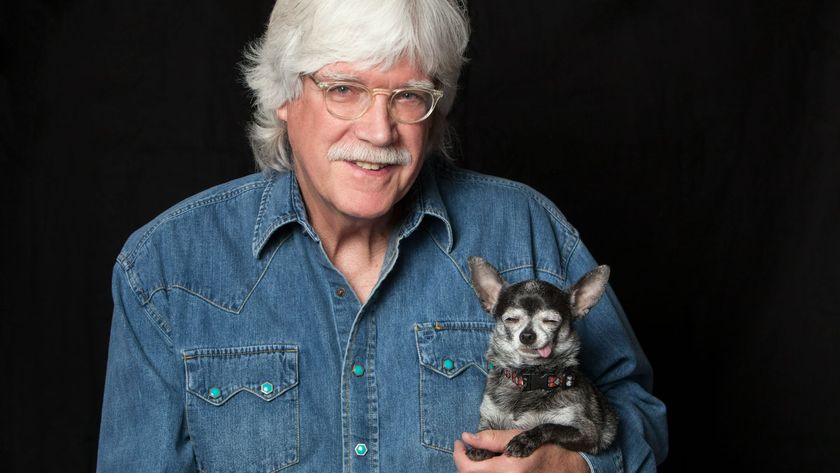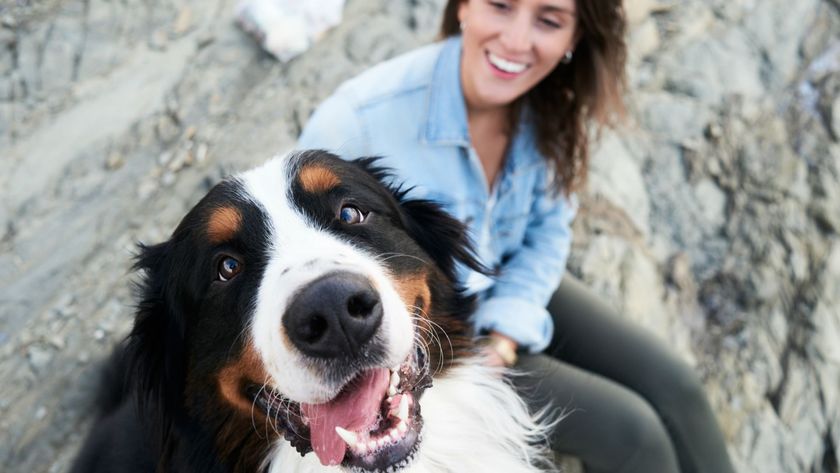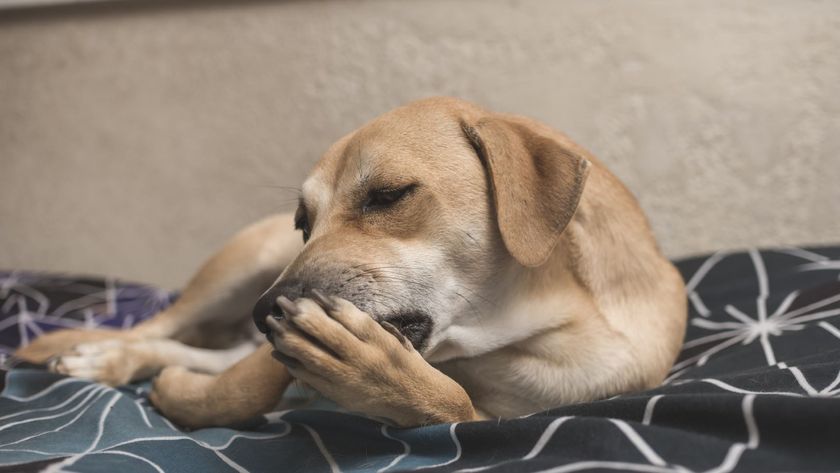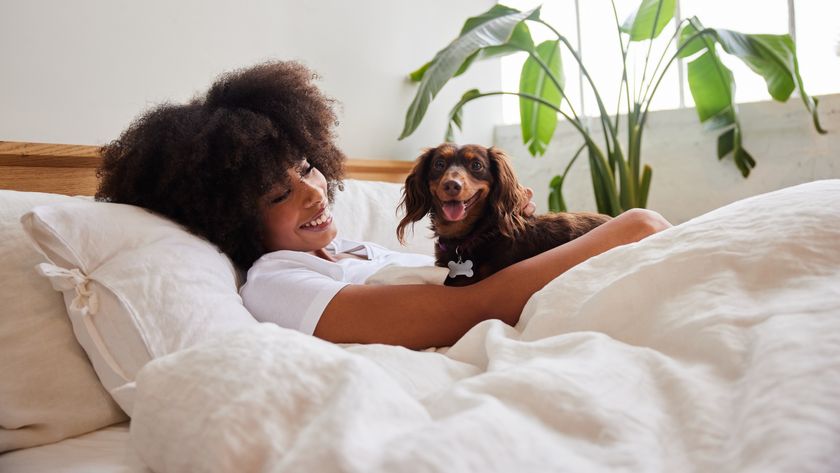What do dogs dream about?
We scour the research to answer the question "what do dogs dream about?" and shed some light on what you should do if your furkid is having a nightmare
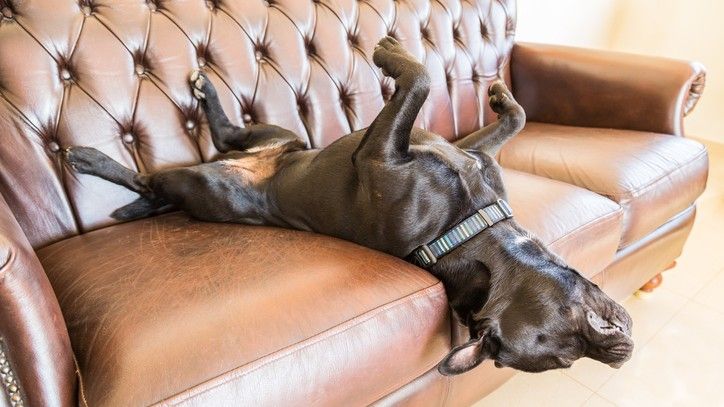
“What do dogs dream about?” is a question many pet parents find themselves pondering while they watch their pup twitch and move about in their sleep. And the good news is, it turns out researchers have the answer!
While scientists still have a lot of work to do to figure out dog dreams, findings in recent years have brought us a step closer to understanding the complex inner workings of our canine companions' minds.
Researchers believe that almost all animals dream and that just like us, dogs go through several sleep cycles: wakefulness, Rapid Eye Movement sleep (REM) and non-rapid-eye-movement sleep.
And, contrary to what you might think, dogs have been shown to have dreams just as complex as we humans do, as well as possessing the same ability to remember and replay events that happened during the day – pretty cool, huh?
If you’re keen to know more about what dogs dream about, then you’ve definitely come to the right place. So, pick up one of the best dog beds, pop your pup in it and sit back and relax as we take you inside the inner workings of your canine companions world while they’re at rest.
- Why do dogs sleep so much?
- Seven dog sleep positions and what they mean
- A vets guide on how to get a dog to sleep
What do dogs dream about?
Believe it or not, your mutt’s mind is not a blank canvas during those many hours they spend sleeping, in fact, quite the contrary. Not only do dogs dream, but research suggests that they dream about waking activities in much the same way as we humans do.
In a 1977 study published in the journal Physiological Behavior, scientists recorded the electrical brain activity of six pointer dogs as they moved through the three sleep cycles – wakefulness, Rapid Eye Movement sleep (REM), and non-rapid-eye-movement sleep.
What they found was that the dogs spent 44% of their time alert, 21% drowsy, and 12% in REM sleep. The remainder of the time was spent in the deepest stage of non-REM sleep, known as slow-wave sleep.
Matthew Wilson, a cognitive scientist at the Massachusetts Institute of Technology who studies learning and memory, says that much like humans, when animals are in non-REM sleep the brain will categorize the day's activities whereas REM sleep tends to trigger a deeper process of exploration, which is where bizarre sleep imagery tends to come from.
So, what does all that mean for your doggy’s dreams? Well, Stanley Coren, a professor emeritus of psychology at University of British Columbia who has studied dogs extensively, has found it’s all quite straightforward.
"What we've basically found is that dogs dream doggy things," Coren said. "So, pointers will point at dream birds, and Dobermans will chase dream burglars. The dream pattern in dogs seems to be very similar to the dream pattern in humans."
It’s likely that your pooch dreams about food, playing fetch and going walkies, and the chances are also high that you regularly feature in their dreams as well. Anything your dog does during the day gets processed by their brain at night and that includes any bonding time or cuddles that the two of you have shared.
But is your dog dreaming all the time their eyes are shut or does it just happen in short bursts? It turns out research has an answer for that too.
How often do dogs dream?
Perhaps the most surprising finding of Coren’s extensive work with dogs is how the length of their dream life can be influenced by their breed. While we would expect all dogs to dream in roughly the same way, it turns out that their size impacts how often they dream for.
Dr Joanna Woodnutt says that while all dogs dream, how often they do so depends on the dog. “It’s likely that most dogs dream on a daily basis, but not all dreams will be obvious to those of us watching!”
It’s a view shared by Coren who goes on to state that while research has yet to discover why, smaller dogs tend to dream more frequently but for much shorter periods, while large dogs have less frequent dreams but the dreams they do have are much longer.
And dream length isn’t the only difference we can expect to see between dogs, it turns out puppies and senior citizens of the canine world may exhibit outward signs of dreaming that adult dogs don’t display.
What do puppies dream about?

While the content of a puppy or senior dog's dreams are likely to be much the same as any other canine, they’re more likely to display signs that they’re in dreamland in a way adult dogs won’t.
In both dogs and humans there’s a part of the brainstem called the pons that is responsible for paralyzing the large muscles during sleep. Because a puppy’s brain is still developing, this function isn’t yet able to fully work and in older dogs, it naturally becomes less effective as they age.
Coren says that because the pons doesn’t work to its full capacity in younger or older dogs, they’re more likely to twitch in their sleep, something that Woodnutt says can cause new pet parents a great deal of concern.
“Puppies are more likely to twitch during their dreams than adult dogs because their brains are still developing. This can be worrying for new owners, who often worry their dog is having a seizure,” she explains. “If you are unsure, try to wake your puppy – a puppy twitching in their dreams will wake up normally, whilst a dog having a seizure won’t come out of it when you talk to them or touch them.”
While it’s clear that there are some differences in dream length and the outward signs of dreaming, one thing dogs of all breeds, ages and stages share in common is their ability to experience nightmares in much the same way that we do.
What do dogs have nightmares about?
Research conducted by Harvard University into the nightmares humans have, can be useful in helping us to understand when nightmares might occur in dogs, why they happen and what they might be about.
Dreams, including nightmares, tend to happen as we emerge from REM sleep when we’re on the sleep-wake cusp, which is also true for dogs. During this time our memories start to come together and consolidate and it’s here that both humans and dogs will begin to dream vividly.
Just like us, dogs will tend to have nightmares about things that they feel stressed or anxious about during their waking hours, these sorts of things may include going to the vet, having their nails trimmed or, if your dog is a rescue pup, they may dream about their pre-rescue life.
“We know that dogs dream within their experiences to a great extent, so it’s likely their nightmares are based on things they have been frightened of in real life,” Woodnutt explains. “They may also have nightmares about things they haven’t experienced but that are easy to imagine, like another dog stealing their food.”
Signs your dog may be having a nightmare include crying, growling or whimpering in their sleep, so, should you wake them up if you notice this behavior or is it best to let sleeping dogs lie?
Should you wake your dog if they’re having a nightmare?
There’s no hard and fast rule around this one, with different experts having different opinions on whether it’s best to leave your dog when they’re having a nightmare or wake them up.
“Whilst there’s no scientific answer to this, I wake my dog up when she’s having a nightmare,” Woodnutt explains. “However, you should be cautious – as your dog comes out of sleep, it’s possible they’ll be confused and fearful and lash out.”
Most professionals agree that waking a dog when they’re in a deep sleep increases the danger, but Woodnutt suggests there is a way around this. “I usually find that gently talking to my dog brings her out of the dream and this can be done from a distance if necessary.”
The reason waking your dog from a distance while they’re having a nightmare is advisable is because just like humans, abruptly being pulled from a dream state can cause several seconds of disorientation. It could take a few moments for your dog to realize they’re no longer asleep, during which time they could lash out.
As Woodnutt suggests, talking to your dog from a distance, such as lovingly saying their name, is often enough to break through the nightmare and cause your dog to calm down.
PetsRadar Newsletter
Get the best advice, tips and top tech for your beloved Pets

Kathryn is a freelance writer who has been a member of the PetsRadar family since it launched in 2020. Highly experienced in her field, she's driven by a desire to provide pet parents with accurate, timely, and informative content that enables them to provide their fur friends with everything they need to thrive. Kathryn works closely with vets and trainers to ensure all articles offer the most up-to-date information across a range of pet-related fields, from insights into health and behavior issues to tips on products and training. When she’s not busy crafting the perfect sentence for her features, buying guides and news pieces, she can be found hanging out with her family (which includes one super sassy cat), drinking copious amounts of Jasmine tea and reading all the books.

